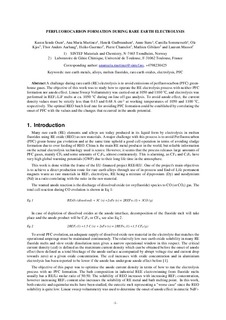| dc.contributor.author | Osen, Karen Sende | |
| dc.contributor.author | Martinez, Ana Maria Cuellar | |
| dc.contributor.author | Gudbrandsen, Henrik | |
| dc.contributor.author | Støre, Anne | |
| dc.contributor.author | Sommerseth, Camilla | |
| dc.contributor.author | Kjos, Ole Sigmund | |
| dc.contributor.author | Aarhaug, Thor Anders | |
| dc.contributor.author | Gaertner, Heiko | |
| dc.contributor.author | Chamelot, Pierre | |
| dc.contributor.author | Gibilaro, Mathieu | |
| dc.contributor.author | Massot, Laurent | |
| dc.date.accessioned | 2018-03-23T08:03:50Z | |
| dc.date.available | 2018-03-23T08:03:50Z | |
| dc.date.created | 2018-03-22T15:09:20Z | |
| dc.date.issued | 2018 | |
| dc.identifier.citation | Light Metals. 2018, 1443-1448. | nb_NO |
| dc.identifier.issn | 0147-0809 | |
| dc.identifier.uri | http://hdl.handle.net/11250/2491811 | |
| dc.description.abstract | A challenge during rare earth (RE) electrolysis is to avoid emissions of perfluorocarbon (PFC) green-house gases. The objective of this work was to study how to operate the RE electrolysis process with neither PFC formation nor anode effect. Linear Sweep Voltammetry was carried out at 1050 and 1100 °C, and electrolysis was performed in REF3-LiF melts at ca. 1050 °C during on-line off-gas analysis. To avoid anode effect, the current density values must be strictly less than 0.43 and 0.68 A cm−2 at working temperatures of 1050 and 1100 °C, respectively. The optimal REO batch feed rate for avoiding PFC formation could be established by correlating the onset of PFC with the values and the changes that occurred in the anode potential. | nb_NO |
| dc.language.iso | eng | nb_NO |
| dc.publisher | Springer Verlag | nb_NO |
| dc.title | Perfluorocarbon Formation During Rare Earth Electrolysis | nb_NO |
| dc.type | Journal article | nb_NO |
| dc.type | Peer reviewed | nb_NO |
| dc.description.version | acceptedVersion | nb_NO |
| dc.source.pagenumber | 1443-1448 | nb_NO |
| dc.source.journal | Light Metals | nb_NO |
| dc.identifier.doi | https://doi.org/10.1007/978-3-319-72284-9_188 | |
| dc.identifier.cristin | 1575092 | |
| dc.relation.project | EC/H2020/REE4EU 680507 | nb_NO |
| dc.description.localcode | This is a post-peer-review, pre-copyedit version of an article published in [TMS Annual Meeting & Exhibition] Locked until 2.2.2019 due to copyright restrictions. The final authenticated version is available online at: https://link.springer.com/chapter/10.1007%2F978-3-319-72284-9_188#Abs1 | nb_NO |
| cristin.unitcode | 194,66,35,0 | |
| cristin.unitname | Institutt for materialteknologi | |
| cristin.ispublished | true | |
| cristin.fulltext | postprint | |
| cristin.qualitycode | 1 | |
